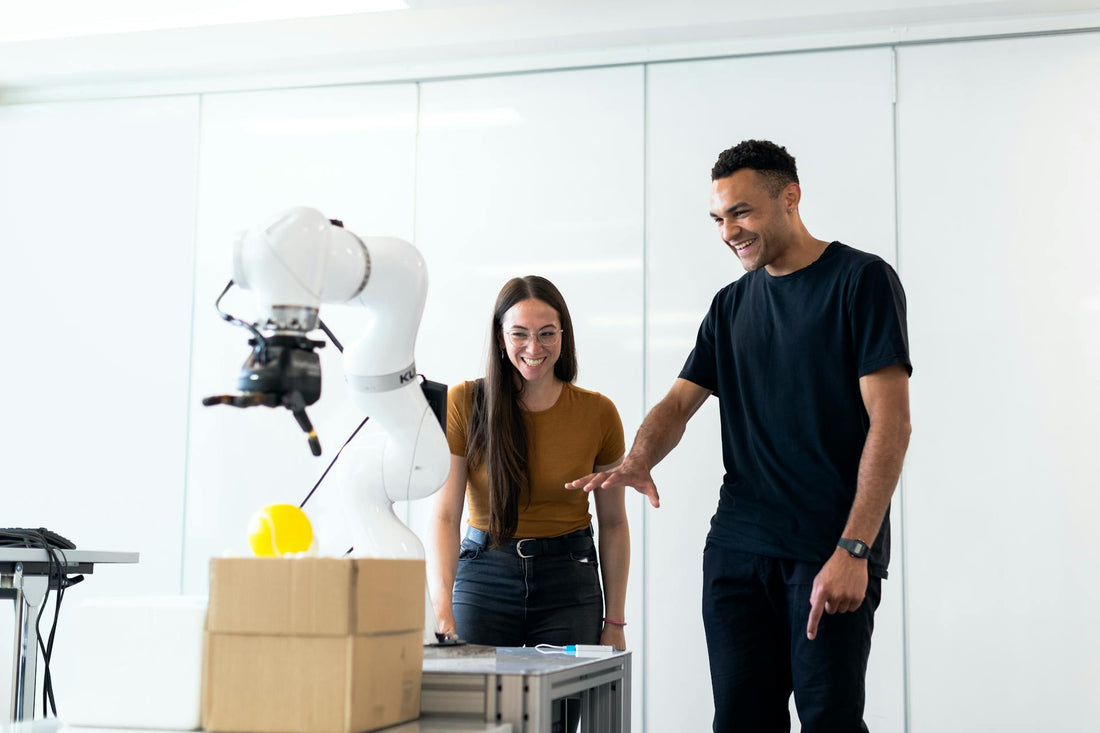
Robots and Cobots: Human-Machine Collaboration for Maximum Efficiency
SPS FulfillmentShare
In the context of the Fourth Industrial Revolution , the synergy between technology and human labor is redefining the way we conceive productivity. Robots and cobots ( collaborative robots ) are the protagonists of this transformation, offering solutions that combine mechanical precision and intellectual flexibility. This collaboration between man and machine allows for greater efficiency, reducing errors and increasing the quality of production processes.
Index
- Differences between robots and cobots
- Advantages of Human-Computer Collaboration
- Challenges and Future Prospects
Differences between robots and cobots

Traditional robots : These automated machines are often designed to perform repetitive, precise tasks in controlled environments. Their strength lies in speed and accuracy, but they often require complex programming and are less adaptable to operational variations.
Cobots : Unlike traditional robots, cobots are designed to work in synergy with humans. They are equipped with advanced sensors and safety systems that allow them to operate in close contact with personnel, facilitating dynamic and flexible interaction. The ability to adapt to changes in the production process makes cobots ideal for environments where variability is high.
Advantages of Human-Computer Collaboration

Combining human skills with the operational capabilities of robots brings numerous benefits:
Increased productivity : Allocation of tasks based on their respective skills allows for faster production processes, with cobots taking on repetitive tasks and workers handling decision-making and creative activities.
Improved Quality : Automating tasks prone to human error reduces waste and scrap, ensuring high quality standards.
Operational Flexibility : Cobots, thanks to their ability to learn and adapt, can be reprogrammed for new tasks, allowing companies to respond quickly to market changes.
Risk Reduction : Working in teams with safe and controlled machines allows humans to be assigned lower-risk tasks, improving working conditions and reducing injuries.
There are several sectors that are already benefiting from human-machine collaboration:
Manufacturing : In industrial settings, cobots assist workers on assembly lines, managing repetitive and physically demanding tasks.
Logistics and warehousing : The automation of goods handling processes, integrated with human experience in managing flows, optimizes internal logistics and distribution.
Healthcare : Even in the medical sector, robots and cobots support personnel in delicate operations, from the management of medical materials to support in the operating room.
Challenges and Future Prospects

Despite the many benefits, the implementation of robotic and collaborative systems also brings challenges . Cybersecurity, the need for specific training for personnel, and the integration of heterogeneous systems require investments and careful strategic planning. However, continued technological progress promises to overcome these critical issues, paving the way for new opportunities for growth and innovation.
Collaboration between robots, cobots, and human operators represents a significant turning point in the modern manufacturing landscape. The fusion of mechanical and cognitive skills leads to greater efficiency, quality, and safety in industrial processes. Looking to the future, the evolution of these technologies will continue to redefine the boundaries of what is possible, fostering a more dynamic and interconnected work environment.